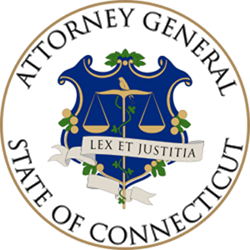Attorney General's Opinion
Attorney General, Richard Blumenthal
July 22, 1991
Honorable Jon M. Alander
Department of Human Resources
1049 Asylum Avenue, 3rd Floor
Hartford, CT 06105
Dear Commissioner Alander:
Upon a recommendation of the federal government,1 your agency requested a formal opinion from the Attorney General concerning two grantees which currently receive Community Service Block Grant (CSBG) funding. The opinion concerns whether the grantees are "eligible entities" as defined in 42 U.S.C. § 9902(1).2
By way of this opinion, we advise you that the two grantees, Connecticut Association for Community Action, Inc. (CAFCA) and the Association of Training Employment Professionals, Inc. (ATEP), are each eligible entities under 42 U.S.C. § 9902(1).3
A. REQUIREMENTS TO BE AN ELIGIBLE ENTITY
The term "eligible entity" was first used in OBRA '81. This Act was part of the Reagan Administration's strategy to give the States more responsibility in administering certain social services and economic assistance programs.4
To be an "eligible entity" under 42 U.S.C. § 9902(1), the organization must meet at least one of six criteria.5 Two of the criteria are relevant here. The criteria (with references to codified authority in brackets added) are that the entity:
(1) Was officially designated a community action agency or a community action program under the provisions of section 210 of the Economic Opportunity Act of 1964 for fiscal year 1981 and did not lose its designation [codified at 42 U.S.C. § 2790]: or
(2) Was a limited purpose agency under Title II of the Economic Opportunity Act of 1964 for fiscal year 1981 which served the general purposes of a community action agency under Title II of the Economic Opportunity Act and did not lose its designation [codified at 42 U.S.C. § 2781 et seq .];
The two grantees meet the second of the above two criteria found in U.S.C. § 2781 et seq. and therefore the question raised is answered affirmatively. This is discussed in more detail below.
In as much as eligibility is established under 42 U.S.C. § 2781 et seq., no further analysis is required. However, it is also possible to establish eligibility under 42 U.S. C. § 2790, i.e. criterion (1) above, should your agency find certain additional facts as discussed below.
B. ELIGIBILITY AS A LIMITED PURPOSE AGENCY UNDER 42 U.S.C. § 2781.
There are three standards within § 2781 that a designated limited purpose agency (LPA) must meet. First, the grantee must have been a limited purpose agency under Title II. Second, The grantee must have been serving the general purposes of a community action agency. And third, the grantee must have not lost that status.
At the request of our Office, your staff contacted the federal Department of Human Services to obtain a copy of the information provided by the Secretary under 42 U.S.C.§ 9904 concerning designated limited purpose agencies.
The last sentence of subsection (c) of § 9904 reads:
The Secretary shall provide to the chief executive officer of each State appropriate information regarding designated limited purpose agencies and grantees which meet the requirements of the second sentence of section 9902(1) of this title.
In response to this request, a list of Fiscal Year 1981 grantees, dated January 28, 1982, was provided on May 13, 1991. ATEP is grantee number 10079. LIPA, as a predecessor of CAFCA, is grantee number 10027. Therefore, both grantees meet the first standard in 42 U.S.C. § 2781. There is no doubt that both agencies have served the general purposes of a community action agency.6 From a review of the mission statements of each grantee and the current state plan, both grantees clearly satisfy the second standard.
Your agency has also provided evidence of continuous funding as LPA's over the fiscal years 1982 through 1991 which indicates both grantees have maintained their designation as a grantee and have been a funded agency since 1981. Therefore, the third standard is met for both grantees.
While the first and second standards are static in nature, the third has a more dynamic characteristic. Loss of LPA designation could disrupt the eligibility entity status. Your agency has indicated that it has not challenged the designation of the CAFCA or ATEP as LPA's for failure to comply with provisions of the Act. Nor has the federal government challenged the same. 7 Your agency has continuously funded the two grantees as LPA's with the approval of the federal government.8
C. ELIGIBILITY BASED ON FUNDING SOURCES PURSUANT TO 42 U.S.C. § 2790.
While the grantees qualify as eligible entities as stated above, they may also qualify under the criterion discussed below. Although OBRA '81 repealed the enabling authority found in the Economic Opportunity Act of 1964,9 OBRA '81 tied the then new CBSG funding to receipt of funding under the repealed Act. Therefore, if an entity was funded under Section 210 of Part A, Title II of the repealed Act of 1964, in pertinent part, which required the director of the federal Office of Economic Opportunity to distribute funds equitably among the States based, in part, on the number of low-income families, unemployed persons, extent of welfare, low education achievements and persons rejected for military service, that entity could qualify as an eligible entity under CSBG. Part A of the Act contains several provisions under which the federal agency could have funded CAFCA or ATEP.
For example, § 206 of part A provides:
The Director is authorized to provide, whether directly or through grants or other arrangements, (1) technical assistance to communities in developing, conduction, and administering community action programs, and (2) training for specialized personnel needed to develop, conduct, or administer such programs or to provide services or other assistance there under.
Additional authority under § 207 provides that:
The Director is authorized to conduct, or to make grants to or enter into contracts with ... appropriate public agencies or private organization for the conduct of, research, training and demonstration pertaining to the purposes of this part.
Further, § 209 of Part A states:
The Director is authorized to make grants to, or to contract with appropriate State agencies for payment of the expenses of such agencies in providing technical assistance to communities in developing, conduction and administering community action programs.
Each of these three authorities are possible funding sources for CAFCA and ATEP that would result in them being an eligible entity under 42 U.S.C. § 2790, in addition to being designated an LPA under 42 U.S.C. § 2781.
Your agency has not presented evidence to this Office concerning the specific source of funding used by the federal government, other than that stated above. Further research of the facts is necessary. Any factual determination by your agency must be based on evidence of funding under § 206, 207 or 209 of Part A as authorized by § 210. If you determine the grantees have received funding under the cited sections that funding qualifies the grantee.
D. CONCLUSION
cafca AND atep comply with the requirements 42 u.s.c 9902(1) as limited purpose agencies under 42 U.S.C. § 2790 as a community action program funded under § 210 of the Economic Opportunity Act of 1964 during federal fiscal year 1981, subject to a finding by your agency that the funds received in 1981 were from § 206, 207 or 209 of Part A as discussed above. Therefore, the question put forth by the federal government is answered in the affirmative. CAFCA and ATEP are eligible entities under at least one of the six criteria found at 42 U.S.C. § 9902 (1).
Very truly yours,
RICHARD BLUMENTHAL
ATTORNEY GENERAL
Nyle K. Davey
Assistant Attorney General
RB/NKD/lm
1 September 6, 1989, the Office of Community Services of the U.S. Department of Health and Human Services Family Support Administration released its "Program Implementation Assessment Report of the Community Service Block Grant Program in the State of Connecticut." The recommendation is found at p. 19. This opinion responds to that recommendation.
2 Section 673(1) of the Omnibus Budget Reconciliation Act of 1981 (OBRA '81): P.L. 97-35, Subtitle B. Aug. 13,1981, 95 Stat. 512; codified as § 9902(1) provides:
The term "eligible entity" means any organization which was officially designated as a community action agency or a community action program under the provisions of section 210 of the Economic Opportunity Act of 1964 [42 U.S.C.A. § 2790] for fiscal year 1981, or which came into existence during fiscal year 1982 as a direct successor in interest to such a community action agency or community action program and meets all the requirements under section 9904(c)(3) of this title with respect to the composition of the board unless such community action agency or a community action program lost its designation under section 210 of such Act as a result of a failure to comply with the provisions of such Act [42 U.S.C.A. § 2701 et seq.]. The term "eligible entity" also includes any limited purpose agency designated under title II of the Economic Opportunity Act of 1964 [42 U.S.C.A. § 2781 et seq.] for fiscal year 1981 which served the general purposes of a community action agency under title II of such Act, unless such designated agency lost its designation under title II of such Act as a result of a failure to comply with the provisions of such Act, any grantee which received financial assistance under section 222(a)(4) of the Economic Opportunity Act of 1964 [42 U.S.C.A. § 2809(a)(4)] in fiscal year 1981, and any organization to which a State which applied for and received a waiver from the Secretary under Public Law 98-139 made a grant under this Act in fiscal year 1984.
3 Two administrative implications arise from this affirmative answer. The first concerns the federal requirement that 90 % of CSBG funds be granted by the state to "eligible entities." 42 U.S.C. §9904(c)(2)(A). To date, the state has complied with the requirements even without considering the status of CAFCA and ATEP as eligible entities. Inclusion of CAFCA and ATEP in the eligible entity category enables the state to have greater flexibility in granting funds from the 5 $ discretionary category.
The second implication concerns the vesting of certain due process rights held by eligible entities, but not other grantee. Eligible entities have a right to a hearing on the record and a decision by the Secretary confirming the State's findings. 42 U.S.C. § 9904(c)(ll) and § 9905a(b); Accion Social de Puerto Rico, Inc. v. Viera Perez 831 F.2d 365, 367 (1st Cir., 1987).
4 For a historical perspective, see Accion Social, supra. at 366. See also: S. Rep. No. 139, 97th Cong., 1st Sess. 909. reprinted in 1981 U.S. Cong. & Admin. News 933.
5 See 52 F.R. 37957 (October 13, 1987).
6 The Mission Statement of ATEP states the organization is:
Committed to the enhancement of professionalism among the employment and training community by providing career training and career enhancement sessions for the professionals which are designed to raise their skill level as well as to facilitate the exchange of information and knowledge between and among all professionals in the field including meeting, newsletter, maintenance of a research library, and technical assistance.
Article Two of the By-Laws of CAFCA states, in pertinent part, that its purpose is:
to encourage, promote, and stimulate the community development of human resources, with particular emphasis on the development of expertise in the operation of community action programs which demonstrate promise of concrete progress toward elimination of poverty and the cause or causes of poverty.
7 On December 5, 1990 federal approval was received for the current Connecticut CSBG Plan which included the two LPA grantees.
8 See CSBG State Plan for October 1, 1990- September 30, 1991 (Part B at B2) on assurance of compliance with 42 U.S.C. 9902(1).
9 P.L. 88-452, Title II, Aug. 20, 1964, 78 Stat. 519; Repealed P.L. 97-35, Title VI, § 683(a), Aug. 13, 1981, 95 Stat. 519. (interim amendments not cited).


